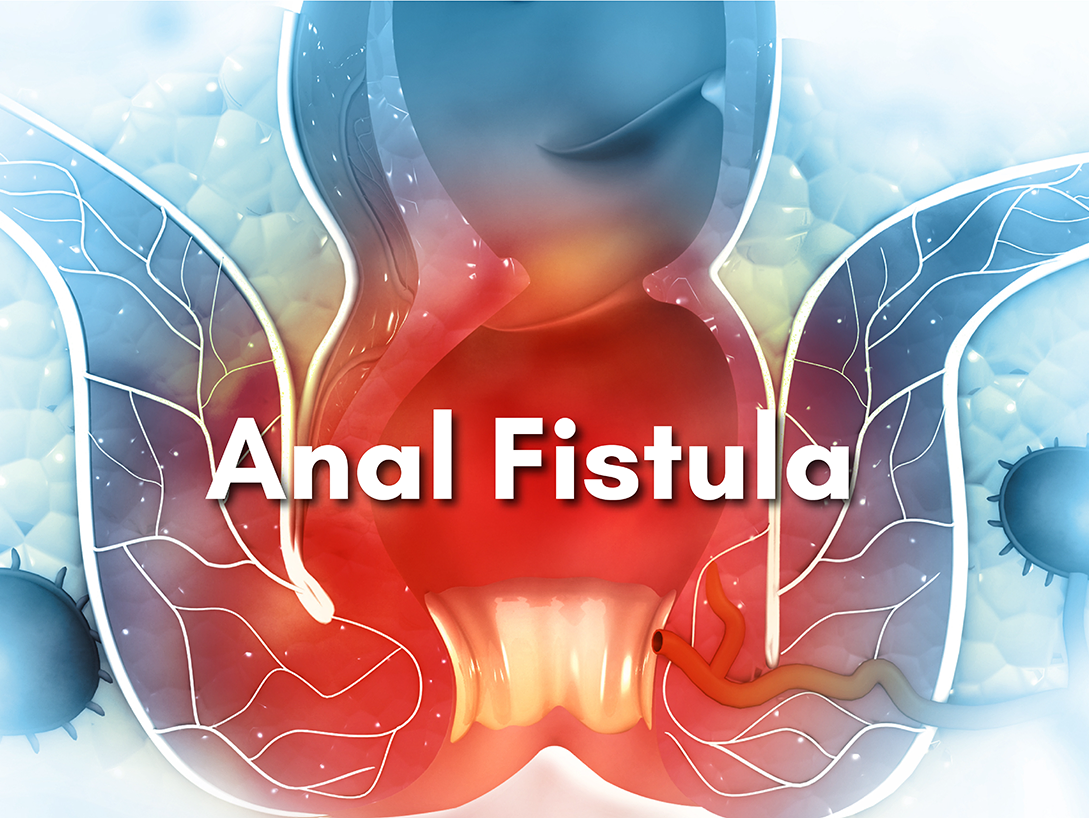What is an anal fistula?
An anal fistula is a tunnel that connects the lining of the anus with the skin next to the anus. It is often caused by an anal abscess that has not healed properly. A sign of an anal fistula is persistent leakage of pus from an opening near the anus.
If this opening closes partially, pus can accumulate in the tunnel and form another abscess. This can lead to a cycle of repeated abscesses and fistulas at the same site.
What causes an anal abscess?
An anal abscess is caused by an infection of one of the glands that produce mucus to lubricate the anus.
What causes a fistula?
A fistula develops when an abscess has drained itself or has been drained surgically, but the skin does not heal completely. This leaves a small hole on the outside that connects to the infected gland inside the anus.
Only a minority of people who have had an abscess will develop a fistula.

How is an abscess treated?
If the infection is detected very early, antibiotics may work, but most abscesses need to be drained surgically. This usually requires a general anaesthetic and a short stay in hospital.
How is a fistula treated?
A fistula almost always requires surgery to cure it. The best results are delivered by specialist colorectal surgeons.
Fistulotomy
The most common type of surgery for anal fistulas is a fistulotomy. This involves cutting along the entire length of the fistula to open it up and let it heal as a flat scar. A fistulotomy is the most effective treatment for many anal fistulas. But it is usually only suitable for fistulas that do not pass through much of the sphincter muscles, which control the opening and closing of the anus. This is because cutting these muscles can cause incontinence (loss of bowel control).
A colorectal surgeon may need to cut a small part of the sphincter muscles during the procedure and they will try to reduce the risk of incontinence. If the risk of incontinence is too high, another procedure may be recommended instead.
Seton techniques
If the fistula passes through a significant part of the sphincter muscles, a colorectal surgeon may suggest inserting a seton. A seton is a piece of surgical thread that is left in the fistula for several weeks to keep it open and allow it to drain and heal, while avoiding cutting the sphincter muscles.
Loose setons allow fistulas to drain, but do not cure them. To cure a fistula, tighter setons may be used to cut through the fistula gradually.
Advancement flap procedure
An advancement flap procedure may be considered if the fistula passes through the sphincter muscles and a fistulotomy would have a high risk of causing incontinence. This involves cutting or scraping out the fistula and covering the hole where it entered the bowel with a flap of tissue taken from inside the rectum, which is the final part of the bowel.
LIFT procedure
The ligation of the intersphincteric fistula tract (LIFT) procedure is a treatment for fistulas that pass through the sphincter muscles, where a fistulotomy would be too risky. During this procedure, a cut is made in the skin above the fistula and the sphincter muscles are separated. The fistula is then tied off at both ends and cut open so it lies flat.
Endoscopic ablation

Endoscopic ablation is where an endoscope (a long, thin tube with a small camera on the end) is put in the fistula. An electrode is then passed through the endoscope and used to seal the fistula.
Laser surgery
Radially emitting laser fibre treatment involves using a small laser beam to seal the fistula. There are uncertainties around how well it works, but there are no major safety concerns.
Fibrin glue
Treatment with fibrin glue is currently the only non-surgical option for anal fistulas. It involves the surgeon injecting glue into the fistula while you’re under a general anaesthetic. The glue helps seal the fistula and encourages it to heal.
Bioprosthetic plug
Another option is the insertion of a bioprosthetic plug. This is a cone-shaped plug made from animal tissue that’s used to block the internal opening of the fistula.
Acknowledgement
https://www.acpgbi.org.uk/patients/conditions/2/anal_abscess_and_fistula/#:~:text=An anal fistula is often,build up in the tunnel

Dr Nikhil Nanjappa M.S., FRCS Ed., M.IPD Ed., M. FST Ed., has recently returned from the United Kingdom after serving as a Consultant Surgeon at St. James’s University Hospital, Leeds. He is a consultant surgical gastroenterologist and a colorectal surgeon. He is amongst only a handful of surgeons in the country with 3 years of super speciality training experience in colorectal surgery. He has extensive experience and is trained in advanced minimally invasive techniques for the management of haemorrhoids, fissures and fistulas
For appointments visit www.drnikhilnanjappa.com or call +91081 27867


